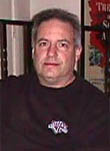|
|
 
|
|
Author
|
Topic: How to get a better Dolby-A sound when playing SR-Films
|
|
|
Mitchell Dvoskin
Phenomenal Film Handler

Posts: 1869
From: West Milford, NJ, USA
Registered: Jan 2001
|
 posted 04-02-2004 02:56 PM
posted 04-02-2004 02:56 PM




This is a case of, if you canít do it right, donít do it at all. Dolby SR will never sound good being processed by a Dolby A decoder. At one time, Dolby made an external box that added SR to the CP50. I also believe, but not sure, that at one time there were also slot compatible cards that allowed you to remove the ďAĒ boards and replace them with ďSRĒ boards (losing ďAĒ capability). If these options are not possible for you, you would do better to bypass the CP50 all together, and feed the photo cellís left right signal into a mike mixer, to boost the volume level, and the output of the mike mixer into a consumer Dolby Pro-Logic receiver. This will give you left center right surround without any noise reduction. It is not right, but will sound better than running SR thru Dolby A.
| IP: Logged
|
|
|
|
|
|
|
|
|
|
|
|
|
|
|
|
|
|
|
|
|
|
|
|
|
|
|
|
|
|
All times are Central (GMT -6:00)
|
|
Powered by Infopop Corporation
UBB.classicTM
6.3.1.2
The Film-Tech Forums are designed for various members related to the cinema industry to express their opinions, viewpoints and testimonials on various products, services and events based upon speculation, personal knowledge and factual information through use, therefore all views represented here allow no liability upon the publishers of this web site and the owners of said views assume no liability for any ill will resulting from these postings. The posts made here are for educational as well as entertainment purposes and as such anyone viewing this portion of the website must accept these views as statements of the author of that opinion
and agrees to release the authors from any and all liability.
|

 Home
Home
 Products
Products
 Store
Store
 Forum
Forum
 Warehouse
Warehouse
 Contact Us
Contact Us




 Printer-friendly view of this topic
Printer-friendly view of this topic










![[Confused]](confused.gif)

![[Wink]](wink.gif)



